16 Proven Tips to Increase Your Email Open Rate in 2024
The success of your email marketing campaigns often depends on its open rates. With a better open rate, you can have more conversions and intended actions from email recipients.
Studies have shown that email marketing is absolutely a great channel to reach your audience with the best return on investment ($44 for every $1 spent). But you’ll only be able to tap on the benefits of email marketing if you can get the best open rates.
Email open rate represents how effective the emails you’re sending out to your audience and potential customers. We’ve put together a list of 16 proven tips that will help you perfect your email marketing and noticeably increase your email open rates.
What is email open-rate?
Email open rate is, in short, the percentage of subscribers who opened a particular email out of your total subscribers. According to GetResponse email marketing benchmarks for 2019, the average open rate in the world is 22.15%, and the average click-through rate is 3.43%.
What can be considered a good open rate is quite subjective, and the factors that affect it are often not under a company’s control. Your industry, your target audience, and the type of campaigns you are running all play a role in determining how high your open rates can be. While the email’s open rate is important, there are always other metrics that can affect your email marketing performance. So you should look at multiple metrics and think about the goals you have for your email marketing to come up with appropriate tactics.
With that in mind, let’s see the 16 best tips to increase your email’s open rate.
16 Proven tips to increase your email open rate
In this section, we will see all the tips in different key factors of an email marketing campaign. When you apply them, not only do open rates improve, but also other metrics like click-through rate, subscriber number, and even conversion rate will see better results.
Read more:
- 10 Awesome Shopify Abandoned Cart Email Templates
- 101 Killing Email Headlines Examples
- Constant Contact vs Mailchimp
- Klaviyo vs Mailchimp
Master email content
When it comes to having a great email, there are many elements that need to have amazing quality. From the subject line to the copywriting, and even the way you call the recipient, they all affect your email open rate, at the time receiving or in the future. So, mastering your email content is undeniably important.
1. Make the subject line stand out
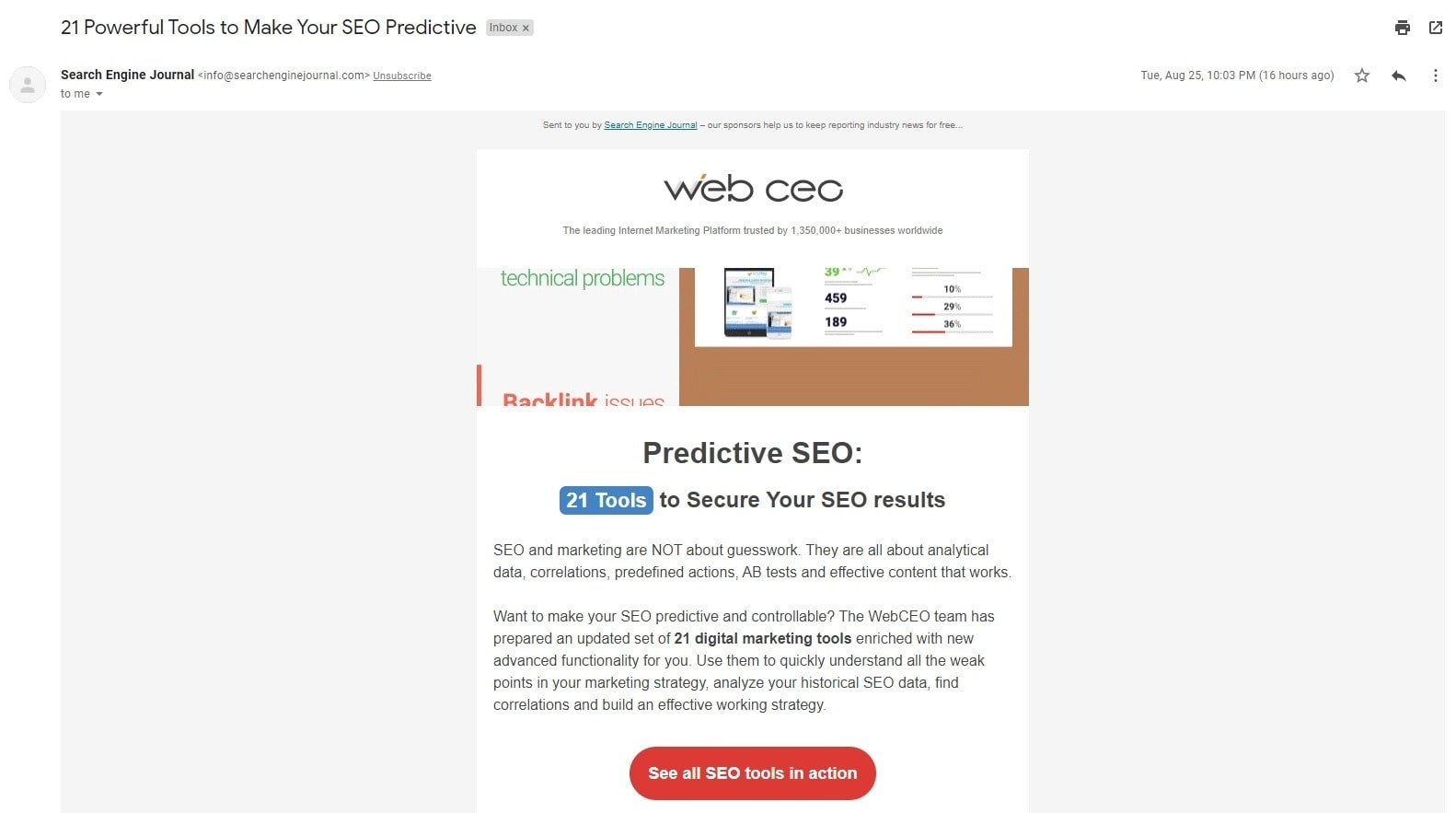
With emails’ open rates, your subject line is everything. If it doesn’t stand out, your email will get lost in the ocean of emails from other companies - who often copy the same subject line formulas for years. Therefore, to get ahead of the competition, you’ll have to get more creative with the subject lines.
Here are some tips for creating creative headlines:
- Trigger curiosity, but don’t get too clever. You want the audience to be curious enough to open the email, but don’t use words that the subscriber can’t have a clue what you’re saying.
- Use a cheerful, conversational, or joking tone like a real person.
- Insert numbers. There’s something about numbers that catch the eye.
- Speak in the language and style your subscribers use, especially when talking to their friends.
Easier said than done, but by testing, you will soon realize which subject line fits your recipients the most.
2. Address the receiver by the first name

Once you’ve had an email list, you can start sending out emails. However, there is no guarantee that they will receive a positive response or even any reaction.
Getting a user’s attention is an ongoing journey, and addressing the receiver’s name is one of the first steps. There is still a high chance that the name of the recipient you have in the database isn’t really their name, but emails are still better personalized by name than not.
The emails just feel more personal this way, like getting an email from a friend. As it’s always good to have some news from a friend, this sending tactic can work.
3. Always have amazing content
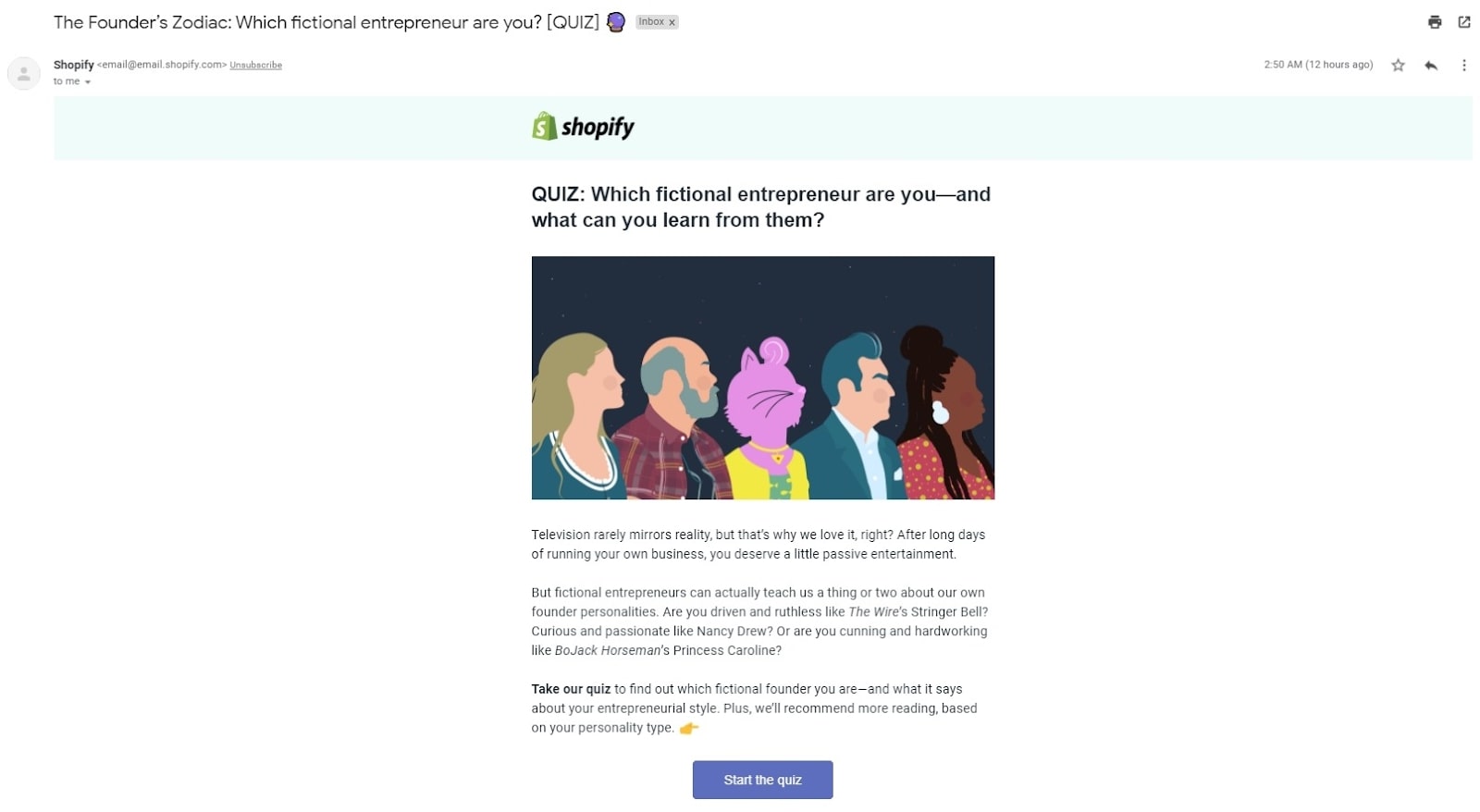
The content inside your email is really important to open rates because if the subscribers are satisfied with the content, they are more likely to open your emails in the future. They may even begin eagerly anticipating your emails.
On the other hand, if the subscriber is not satisfied with what they receive in your email, they may not reopen your email and may even unsubscribe.
It is important to make sure that you are not sending emails for no purpose. Every time you send an email, you need to offer something of real value. The higher the value of each email you write, the more loyal your subscribers are and your open rates will increase.
4. Use information gap

There is always that piece of information existing in every niche that people seem to be using, but no one really knows what it’s about or how it’s done. So maybe it’s time for you to shine.
Assuming you offer a more in-depth approach to what everyone knows, you could tackle the problems that many face. If there are too many things to cover in one email, you can easily create a series of emails. It won’t be easy to serve the social good and obviously takes a lot of valuable time, but most of the time, the tactic brings enormous benefit if you take it seriously.
Use the right timing
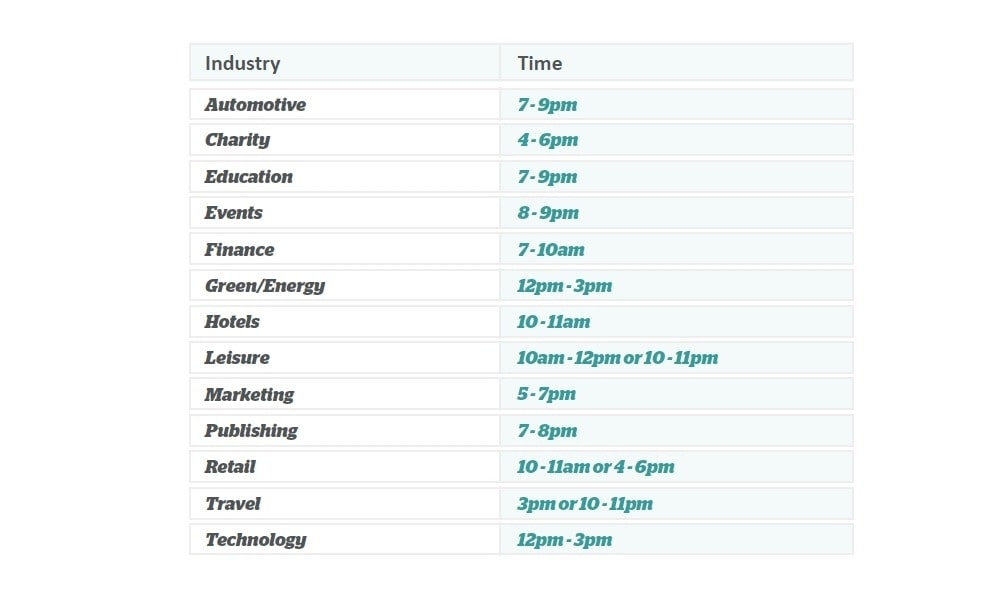
Timing can have a great impact on whether or not your subscriber opens your email, so think twice about what day and time you send your email. Do some A/B testing to determine which timeframes seem to work best and explore those in future campaigns.
5. Have the same delivery time
Consistency is the foundation of all habits. The more fixed your schedule is, the more people having the habit of reading your newsletter. As well as helping your business organize its newsletter internally, this timed consistency represents your ability to stick to a schedule - which is related to effective planning and resource distribution.
Based on the best time to send emails for each industry in the image above, you can select the frequent time to send emails for your business.
6. Avoid sending too many emails
You may be the one with a new perspective or a brilliant new theory, but avoid bringing email fatigue that no one really likes. Enough is always the best, and at one point, you can build an email series that people cannot get enough of and crave for more. Stick to your calendar above and only send branded content when necessary, like new products, huge news, promotion, etc. Otherwise, keep sending good content one email at a time.
7. Resend unopened emails
It’s frustrating working a whole week on a piece of email that your subscribers won’t even open. But there are many situations when you might be able to resend unopened emails to your recipients. If you get a lower open rate than usual or, opposite, your article receives a lot of attention and positive feedback; you can all use a second email.
The key here is to create a better hook. Change the subject line into something that people would find interesting (you can test the alternatives within small groups), and segment the target audience into more specific and similar groups for a second email with a better open rate.
8. Ask your recipients about frequency
Yes, simple as it sounds, you just need to ask. People’s needs change over time with different extents and distinct purposes. So, there is always a possibility that you are having the right solution for your prospects’ needs, but your emails just come in a bad manner to them: too often, too scarcely, or else.
Users often appreciate honesty, so just put yourself out there and ask how often they want to hear from you. Even if it is just once a month, they still can increase their desired degree if your content is amazing. Asking to provide a better service is the first step towards building a meaningful relationship with your subscribers.
Understand list segmentation
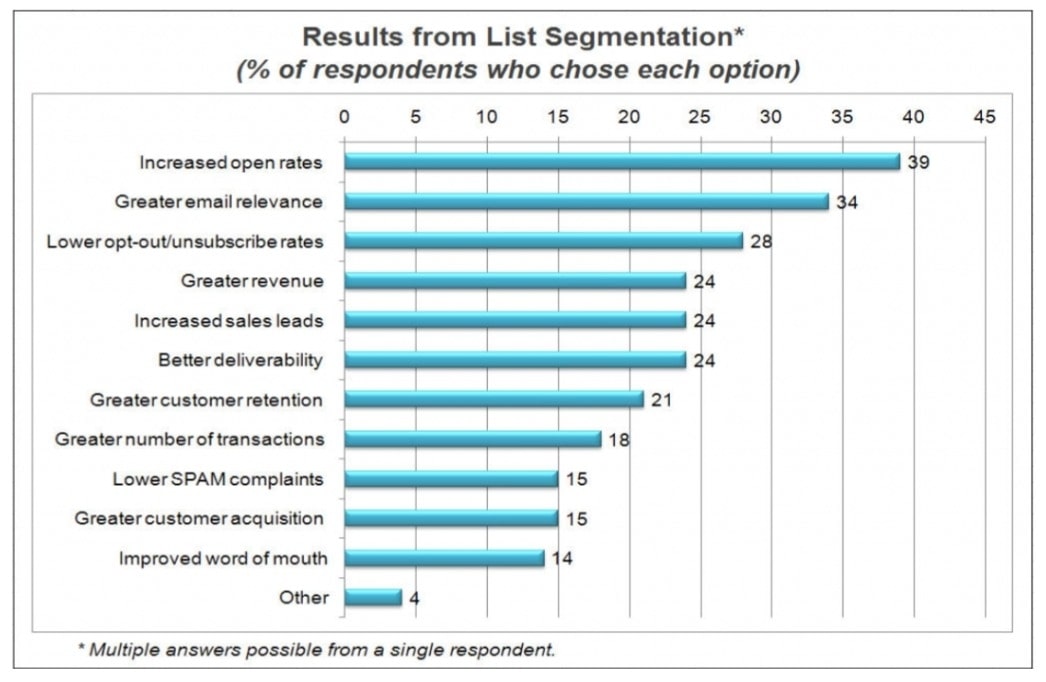
When you send emails, one of the most important factors for an open rate is whether recipients think the email is relevant. And the best way to increase the relevance is by segmenting your email list. Once you have segments, it is easier to know what subject lines and messages that people would open and engage in.
9. Micro-segment the list
Since segmentation is closely related to how relevant your emails are to the contact and open rate, micro-segmentation is crucial to maintain good content and deliver an experience based on your contact’s personas, as well as their needs.
Behavioral data is more specific than demographic data. The mentality behind why people buy your product, whether a user is on a free or paid subscription, how often they open their email, whether they use a desktop or a mobile device, all these information make a more dynamic persona and often more relevant than just a user’s gender and job.
Minimum information to segment your list is:
- Demographic information: gender, job title, professional interests.
- Background: psychological characteristics
- Interests: Kind of information that the subscribers consume regularly and what satisfies them.
- Engagement data: Test customer’s habits of engaging with your emails to tailor the message and content.
10. Constantly upgrade & update the contact list
There are always inactive subscribers in your email list, and there’s always a reason behind their lack of activity. An inactive subscriber is someone who has not engaged with any of your emails in the past six months. However, depending on whether or not they have engaged, there are many creative ways to approach them to upgrade your list.
The first method can be asking what happened and friendly requiring feedback. After all, they already subscribed for all this time, so their input should be valuable. As for users who haven’t opened your emails in a long time, you can send an email to ask whether they would like to unsubscribe or not. Honest is what even unattached people can appreciate.
Build a relationship with the audience
When writing emails, you will need to put your business hat to the side and write like a true friend. This is the only way to build a relationship and appeal to your subscribers, which will get them to open emails. In this modern age, everyone is looking for a reason to ignore a company’s emails. But if you appeal to users on a personal level, there is a better chance of getting an open.
11. Use humor

Humor has a way of creating a strong and immediate connection with people. It is personal, entertaining, and makes its mark on people’s minds.
Thankfully, you don’t have to be a comedian to create a funny email. It is more important that you are able to understand the recipients of your email. If you know they like and dislike, it’s a lot easier to come up with a joke or insert a humorous reference.
You can also insert a funny animated GIF or, if you’re feeling ambitious, you can even create a funny video to include in your email.
12. Use email series
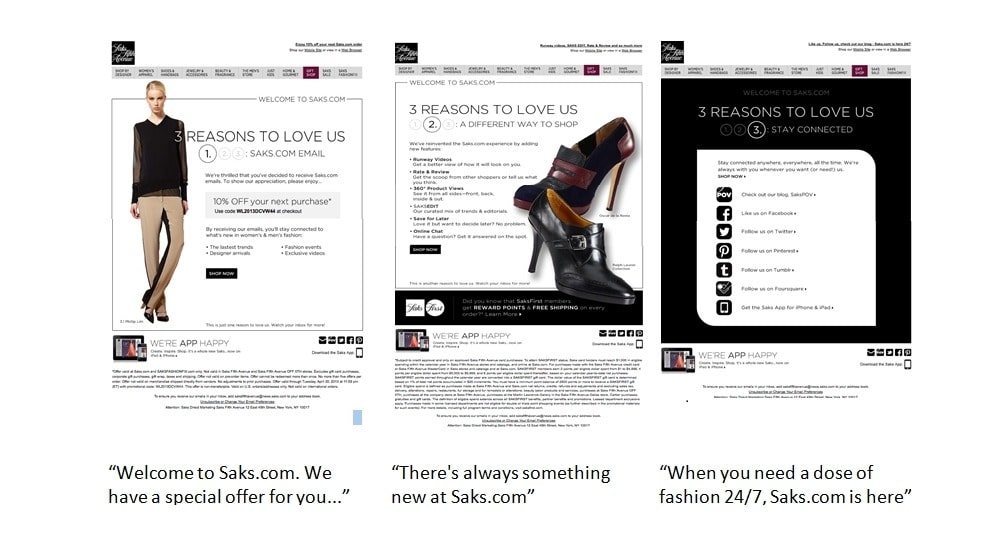
It is getting more and more difficult to create a loyal audience base because there are so many alternative sources of information that deliver similar content. That is why you need to create an email series to keep the audience engaged and create a relationship. The idea behind a relationship is for a sustainable strategy in the long term, so it is always beneficial.
It will require more work to create a series of emails, but you can better shape your message and increase the recipient’s curiosity towards your emails as well. Think of creative ways to create your email series, like an online course or personalized story.
13. Write to just one person
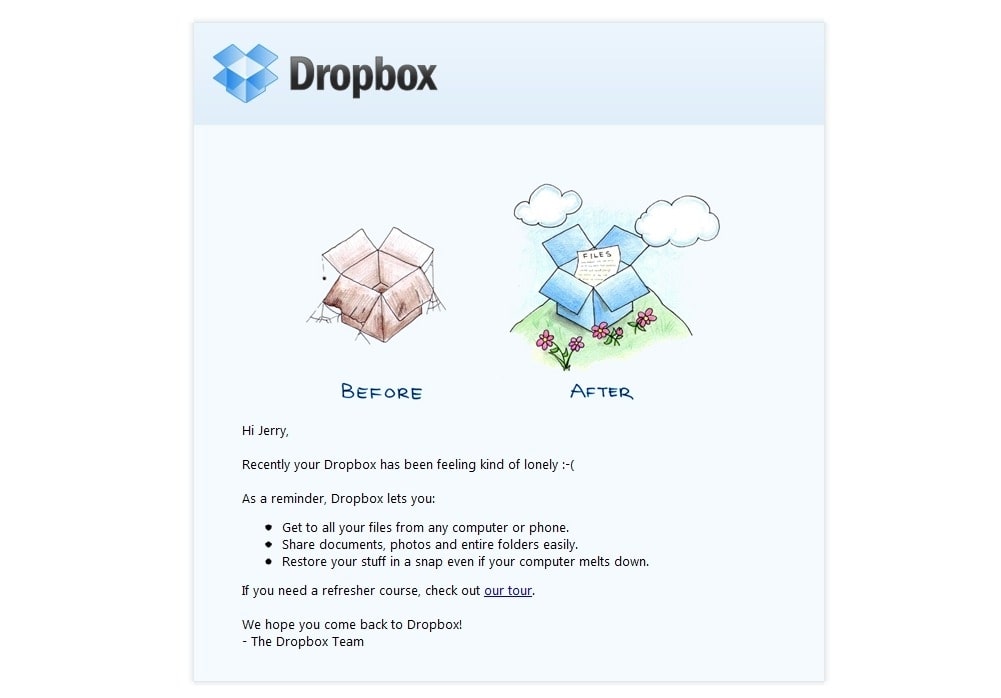
When you are composing your emails, it is natural to think of the thousands of subscribers. However, it is much more useful to write as if you are speaking to an individual with a personalized subject line and message.
To write this way, you have to really know the audience persona. You need to understand their problems, desires, values, likes and dislikes.
Spending a day or two talking to your subscribers will help you a lot: not only with emails but also with creating or improving products and services.
14. Act like a friend
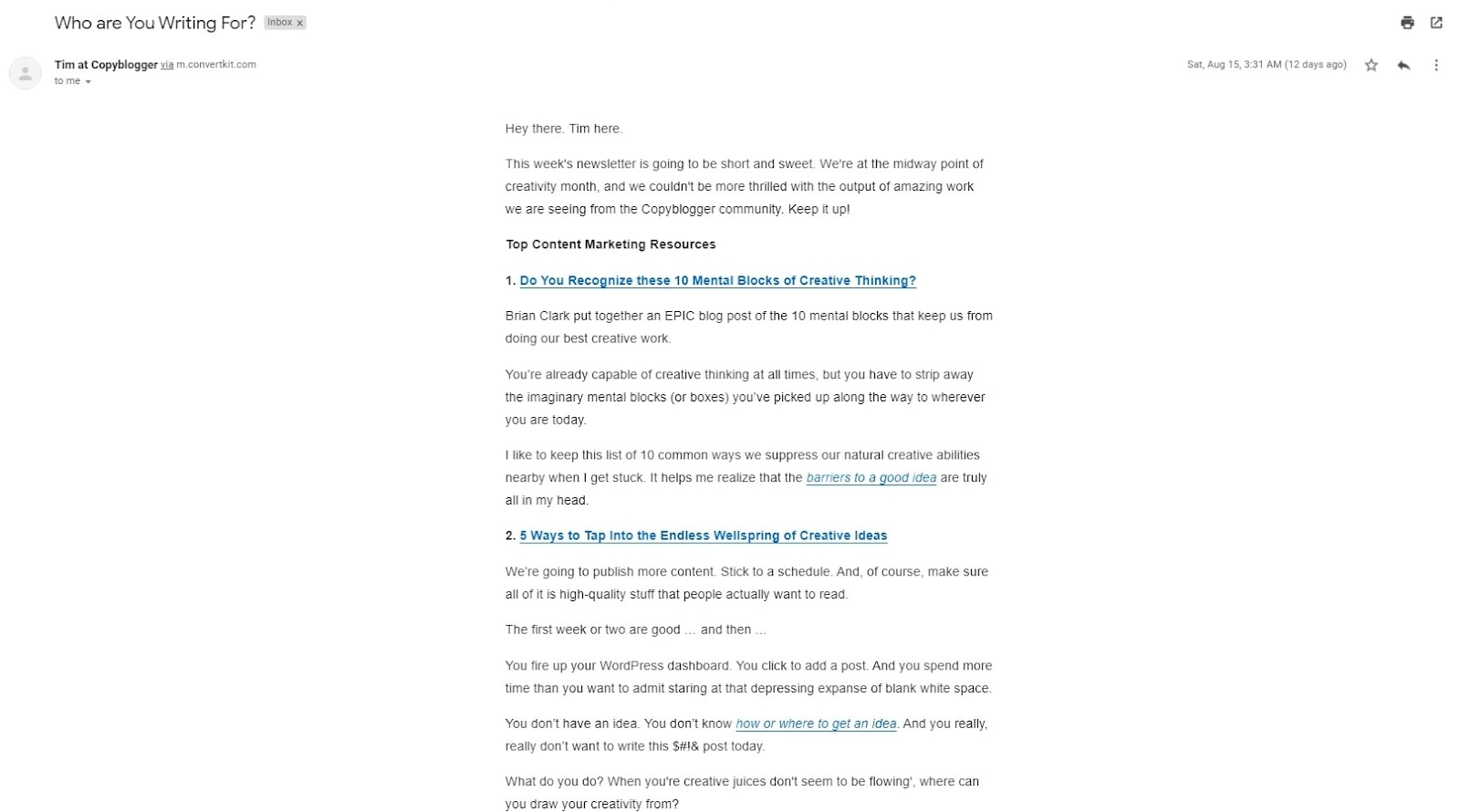
As mentioned above, being a friend is the best way to form a relationship with subscribers. A common phrase like: “We are offering discounts!” can come off as stuffy and distant. A more friendly approach can be: “You got to check out this deal, Joe!”.
The informal tone makes the mail seem a lot more personal, and your recipients are less likely to delete a message from a friend and move on. In the example above, Tim from Copyblogger sent me an email, opening with a friendly greeting, and continuing with positive encouragement to lead to the blog articles below.
Avoid spam filters

Spam filters have become more and more sophisticated over the past few years, but they are still far from perfect. Your emails - even your best ones - can still fall into the dreadful, never-visible spam folder.
If you want to maximize your email marketing campaigns’ efficiency, you need to do everything you can to avoid being flagged as spam.
15. Beware of the word ‘Free’ and attachments
And not just the word ‘Free’. There are many salesy words that can trigger spam filters, like ‘clearance,’ ‘buy,’ ‘cash,’ or ‘discount.’ Deceptive subject lines can also cause recipients to tag your emails as spam, the same for attachments. Whenever you feel undecided about your emails’ spam appropriateness, do some research to avoid negative words to spam filters.
Some more practices to avoid falling into spam folders are:
- Make sure all your subscribers are actually opted-in.
- Send emails through verified domains
- Have a good IP address - which is not associated with spam
- Keep codes clean
- Include your location
- Use merge tags to personalize your To: filed
- Include an unsubscribe button
16. Use email authentication
This is a major milestone for business owners and applies not only to email campaigns but also to your personal branding strategy. It is essential to have authentication to minimize the likelihood of a dirty competitor’s fake account, sending emails on your behalf. In the business world, a single mistake can cost everything you worked for.
You can authenticate your emails using:
- DKIM (Domain Keys Identified Mail): Allows you to verify that the email was actually sent and authorized by the domain’s owner.
- SPF (Sender Policy Framework): Compares the sender’s IP address to a list of authorized IP addresses to send emails.
- DMARC (Domain-based Message Authentication): Ensures that an email sent from your domain is properly authenticated with DKIM and SPF.
Read more:
- How to Create an Email Signature in Gmail?
- How Long Should A Cover Letter Be?
- 12 Mental Triggers in Email Marketing
- How to Build your Email List Fastest?
Final tip
These 16 tips above can help any email marketing campaign to increase its open rate, but don’t worry if you don’t see the result right away. Email marketing is a science of providing the best user experience, so give yourself some time to experiment and find the best tactic for your business as well as subscribers. Spot a new trend, try a new template, follow new strategies, you have many opportunities to make wonderful and personalized emails that many want to open.
If you like the article, feel free to share it with your friends, maybe even through emails. Thanks for reading!
New Posts







